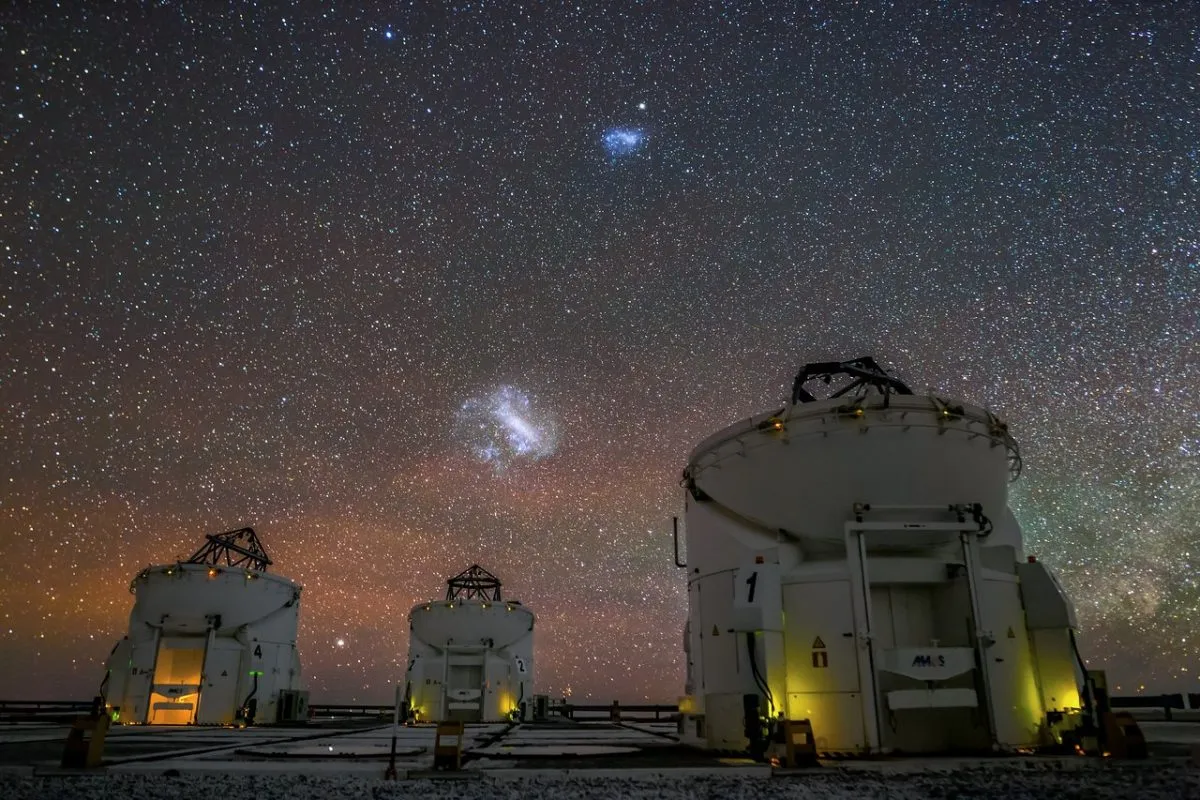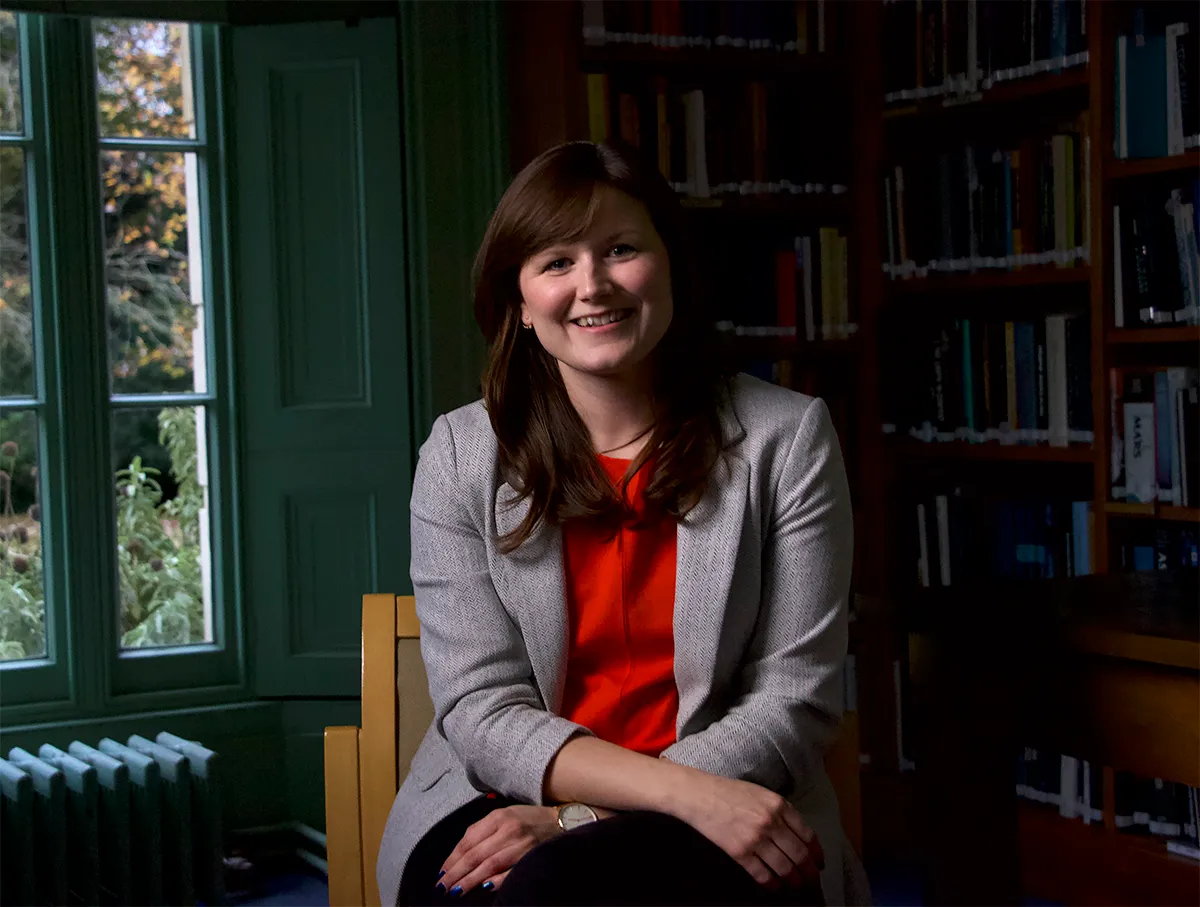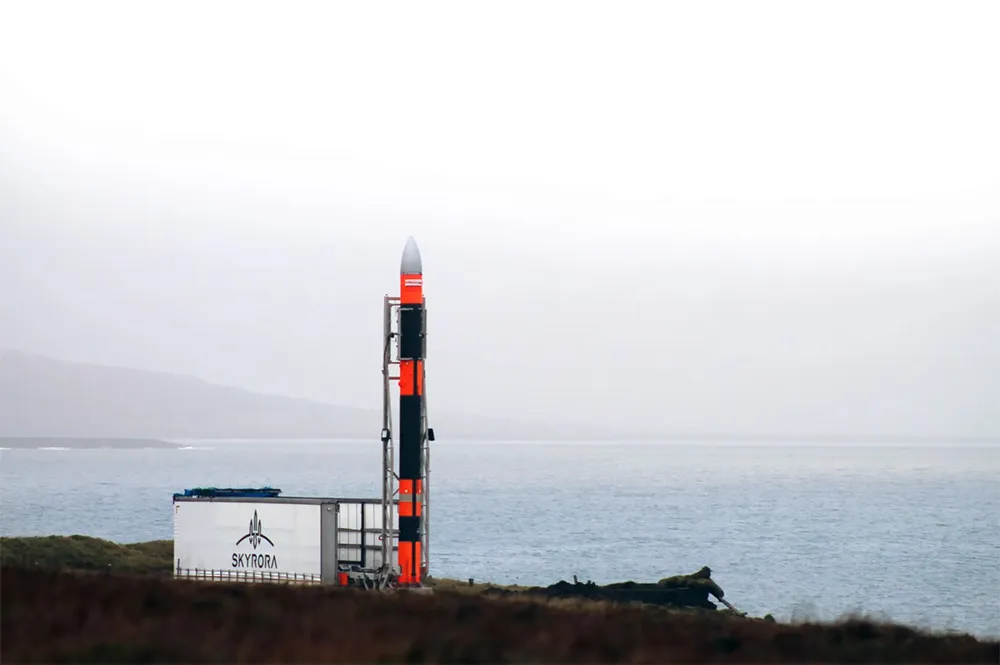The long-running BBC astronomy programme The Sky at Night returned for a new series in April 2025.
The last episode of the 2024 series aired on 11 November, but presenters Maggie Aderin-Pocock, Chris Lintott, George Dransfield and Pete Lawrence are back with a new series.

The next episode of The Sky at Night will be broadcast on 9 June 2025 at 21:50 BST, on BBC Four.
For more information about the show, keep up to date via the BBC Four Sky at Night webpage.
The next episode of The Sky at Night
June 2025 – Greenwich: A Journey Through Space and Time

To mark the 350th anniversary of the Royal Observatory Greenwich, the team look back at this world-renowned institution's rich legacy, and explore our evolving understanding of time.
Presenters Maggie Aderin-Pocock and Pete Lawrence host a modern take on the historic Flamsteed House dinner, joined by leading scientists.
Topics include the origins of the prime meridian, the nature of time and how gravity bends it.
Chris Lintott delves into the observatory archives to investigate the 1919 object that proved Einstein right, and speaks with experts about black holes, quantum gravity and the future of timekeeping.
May 2025 – Secrets of the Red Planet

The team explore the latest discoveries at Mars. 60 years after Mariner 4’s first images, scientists continue to uncover the Red Planet’s secrets.
Maggie Aderin-Pocock visits researchers studying the strange movement of Martian boulders and ancient Scottish rocks that may hold clues to past life on Mars.
Chris Lintott joins a virtual tour with NASA’s Perseverance rover, while Dr Mekhi Dhesi discusses futuristic rocket technology that could make a return mission possible.
Finally, Pete Lawrence shares how to observe Mars and other celestial sights in the summer sky.
April 2025 – Asteroid Strike?

The new series opens with a look at asteroid 2024 YR4, the 'city killer' spacerock that made headlines early in 2025 when calculations of its orbit revealed there was a very slim chance it could hit Earth.
This episode, the team look back at how the story unfolded, and whether Earth is really prepared for a future potential asteroid impact.
November 2024 - Ancestral Skies

The Sky at Night teamed up with BBC Ideas to discover the secrets of archaeology and astronomy and to reflect on our ancestral skies.
October 2024 - Question Time

The Sky at Night’s annual Question Time Special returned in 2024, giving viewers the opportunity to ask questions about space and astronomy.
Host Dallas Campbell was joined by panellists Maggie Aderin-Pocock, Chris Lintott and George Dransfield, Prof Raman Prinja from University College London and Dr Heloise Stevance from Oxford University. Resident astronomer Pete Lawrence shared a guide to the stars for the coming months.
September 2024 - 2075: Our Place in Space

The Sky at Night looks at how space will revolutionise life on Earth over the next 50 years.
At the European Astronaut Centre in Cologne, Chris Lintott meets one of the newest members of ESA’s astronaut reserve: John McFall, who is a former Paralympian and orthopaedic surgeon, and the first recruit to ESA's Fly! study looking at improving access to space for people with physical disabilites.
At the Royal Society in London, Maggie Aderin-Pocock meets space medicine expert Professor Kevin Fong to find outabout the challenges of keeping humans healthy in space.
George Dransfield heads to Astroscale in Oxfordshire, a company coming up with ways to remove space junk.
And Pete Lawrence has some clever tips and tricks for telling satellites and meteors apart, and using smart telescopes to remove satellite trails from deep sky images.
August 2024 - Nicky, NASA and The Next Frontier

The Sky at Night team meet to Dr Nicola Fox, NASA’s Head of Science whose life began in the UK.
Chris Lintott chats to Nicky about her early years in Hitchin in Hertfordshire, and finds out how she fell in love with the stars.
Maggie takes Nicky on a trip down memory lane. Both women studied Physics at Imperial College London in the late 80s to early 90s.
As they revisit familiar haunts, they discuss their experiences and Maggie finds out about Nicky’s love of astrophysics, the challenges she overcame, and how she landed a dream job at NASA.
Along the way, Maggie and Nicky chat about how the university and science have changed, and how new technology and deeper understanding are fuelling the missions for which Nicky is now responsible.
As they come across familiar places, nostalgia hits and the two women unleash their inner child.
Finally, Chris and Nicky discuss her role as the Associate Administrator for the Science Mission Directorate at NASA, also described as the agency’s Head of Science and Nicky reveals what the exciting plans for future missions may reveal.
July 2024 - Webb Telescope: The Story so Far

In July 2022, the James Webb Space Telescope's first images were released.
Visually stunning, it was clear Webb was providing more detailed images of the cosmos than ever seen before.
But for the scientists waiting on the data, that was just the beginning of a journey towards discovering what secrets JWST might reveal.
Two years on, what has the space telescope shown us?
The team visit the University of Bristol to speak to Dr Hannah Wakeford about what the Webb Telescope is revealing about planets beyond our Solar System.
June 2024 - Cosmic Ghosts

Chris Lintott and Maggie Aderin-Pocock meet the scientists and astronomers trying to solve some of the universe’s greatest mysteries by finding new ways to sense what surrounds us in the cosmos.
Chris meets Dr Olivia Jones from the UK Astronomy Centre and discovers how a tool often employed by ghost hunters is great for finding objects hidden in the dust of the cosmos.
He meets Professor Tessa Baker from the University of Portsmouth, who shows him how ripples in spacetime are helping scientists to detect new, unseen cosmic events.
And while scanning the house for spooky sounds, Maggie hears a voice from the past, which leads her to uncover the wonderful work of Vera Rubin – a trailblazing astronomer who helped to prove the existence of dark matter.

Across the country, and over a kilometre further below the Earth’s surface, guest presenter Prof. Chamkaur Ghag is at the Boulby Underground Laboratory.
While there, he discovers how the incredible research site has changed since Patrick Moore and The Sky at Night team visited 20 years ago, and meets some of the Boulby team who are working on the hunt for ghostly dark matter particles.
Meanwhile, Pete Lawrence is at the Bedford School Observatory to show us how to find and photograph inky, ghost-like objects in the sky known as dark nebulae, and to tell us what to look out for in the night sky over the next month.
May 2024 - Hiding in Starlight

Total solar eclipses like the one seen in North America on 8 April, allow astronomers to observe details on the Sun that normally can't be seen.
In the May 2024 episode, the Sky at Night team reveal how scientists are creating eclipses on demand and discovering secrets that can be revealed hidden in that starlight.
Maggie Aderin-Pocock travels to Belgium, where the European Space Agency’s Proba-3 mission is going through its final testing stages.
The mission will to fly 2 satellites together in formation, one acting like the Moon during an eclipse, blocking out the central light of the Sun.
The other will image the corona, the Sun’s outer atmosphere as seen during an eclipse.
Maggie meets Dr Damien Galano from ESA, who tells her about the challenges of the mission and what it hopes to achieve.
Maggie meets Satellite Operations Test Engineer, Ms. Marie Beeckman, who takes her up close to the satellites to find out how the testing is going.
Pete Lawrence is out and about in Bristol, meeting a team of scientists and amateur astronomers.
He discovers how input from the amateurs was crucial to the discovery of two exoplanets colliding, which had caused the dimming of a star.
Chris Lintott is in Glasgow meeting Professor Beth Biller from Edinburgh University to discover why it is only by creating eclipses of distant stars, that we could potentially find exoplanets more like our own.
April 2024 episode - Space Rock Return

In the April 2024 episode, The Sky at Night looks at NASA's OSIRIS-REx mission, which in 2023 brought back a sample of Asteroid Bennu to Earth.
The team discover what it takes to analyse the sample of space rock, what it might tell us about planet Earth and perhaps even the origins of life.
The episode features Professor Sara Russell & Dr. Ashley King from the Natural History Museum in London, who were both involved with the OSIRIS-REx mission.
Chris Lintott discovers the challenges the spacecraft encountered and learns about Sara and Ashley’s work on the space rock. By understanding the journey the asteroid has been on, they can learn more about the conditions in which the Earth formed and how our planet became the water rich place it is today.
Maggie Aderin-Pocock heads to Diamond Light Source to meet Dr. Sharif Ahmed, who explains how the very large machine housed there produces light 10 billion times brighter than the sun, from which powerful x-rays are created, allowing scientists to analyse the very smallest of samples.
George Dransfield heads to Royal Holloway University to meet Dr. Queenie Chan, who’s looking for tiny bubbles of liquid in the space rock samples, in which she may discover the secrets of how the building blocks of life could have formed.
And astronomer Pete Lawrence is back to tell us what can be seen in this month’s night sky.
2023 series
November 2023 episode

The last episode of The Sky at Night in 2023 was broadcast in November and was a collaborative episode with Radio 4's The Infinite Monkey Cage.
Maggie, Chris and Pete joined Professor Brian Cox, Robin Ince and Dara Ó Briain in front of a live audience at the BBC’s Radio Theatre to discuss their love of astronomy and advice for stargazing.
Outside the Radio Theatre Pete Lawrence hosted a ‘Star Party’, joining amateur astronomers to observe the Moon, Saturn and Jupiter using binoculars, telescopes and the naked eye.
And the show looked back at 66 years of stargazing with The Sky at Night.
October 2023 episode

The October 2023 episode of The Sky at Night is an hour-long ‘Question Time’ edition, recorded live at the University of Exeter for the British Science Association’s Science Festival.
Chaired by science journalist Dallas Campbell, the Question Time panel includes Chris Lintott, Maggie Aderin-Pocock and Pete Lawrence.
They're joined on stage by Dr Claire Davies, who studies star and planet formation and Dr Hannah Wakeford who specialises in the atmospheres of exoplanets.
The panel answer questions from Sky at Night viewers, BBC Sky at Night Magazine readers and from audience members.
Questions cover all things astronomical. We hear about updates from the Voyager missions to life on other planets, and discover where the panel would want to send future space probes if they had the chance.
September 2023 episode

In the September 2023 episode of The Sky at Night, Maggie travels to the Chilean Atacama Desert to get a sneak peek at the workings of the Very Large Telescope - or VLT.
The VLT has been responsible for some of the greatest astronomical breakthroughs of all time.
It is located at the Paranal Observatory in one of the driest places on earth apart from the North and South poles.
This makes it the perfect place for an observatory because there is little moisture in the air distorting the view of the stars.
Maggie meets some of the scientists, engineers and astronomers working at the site.
She meets the head of maintenance, support and engineering Maxime Boccas, who leads the operation of cleaning the VLT's mirrors.
Maggie also meets astronomer Dr Joe Anderson, who uses the VLT’s specialised instruments – devices that analyse light from the universe, helping scientists to see and better understand the cosmos.
And Maggie meets Vanessa Peidro - the Head of Logistics and responsible for maintaining not just the buildings and vehicles but also managing food, water and other facilities that cater for 150-160 people on site at any one time.
She speaks to physicist Francoise Delplancke-Stroebele and her colleague Frederic Gonte, who are leading the VLT's next upgrade – Gravity+.
And Maggie also finds out about the Extremely Large Telescope or ELT, which is currently in construction.
August 2023 episode

August 2023 episode - Black Holes: Searching for the Unknown
In the August 2023 episode of The Sky at Night, the team investigate the mysterious objects known as black holes.
Dr Becky Smethurst of the University of Oxford reveals how a black hole forms from the death of a star.
Chris investigates whether black holes deserve their menacing portrayal in popular culture and what would happen if we got too close to the event horizon.
Maggie explores how scientists are trying to understand more about black holes by meeting Dr Tessa Baker who works on LIGO.
Chris meets with Dr James Nightingale who has recently discovered one of the largest black holes using new computational technology and gravitational lensing.
They explore the relationship between black holes and galaxies, as its thought that within the centre of every galaxy lies a supermassive black hole.
Pete Lawrence shows us how to find a black hole in the sky, and Saturn at its brightest and best.
George Dransfield visits Dr Silke Weinfurtner at her black hole laboratory where they are simulating features of black holes here on earth.
July 2023 episode

The Sky at Night team investigate the controversial world of alien communication.
If we discover aliens, how would we communicate with them, what should we say and should we even communicate with them at all?
The episode follows astrobiologist Doug Vakoch on a trip to the UK.
Vakoch runs an organisation aiming to contact extra terrestrials and is in Britain to meet with experts who can help with his mission.
He meets Prof Arik Kershenbaum, a zoologist from the University of Cambridge specialising in animal communication and xenolinguistics – the language of aliens.
He also meets Paul Quast, a researcher from the Beyond the Earth Foundation who is assembling a ‘Companion Guide to Earth’ for future humans and passing aliens.
Exoplaneteer George Dransfield meets astrophysicist Professor Tim O’Brien, who reveals how scientists use radioastronomy to listen for extra terrestrial signals.
And Chris Lintott delves into the history of scientists trying to send messages to aliens. And he asks whether we should really be trying to communicate with them at all.
June 2023 episode

Episode title: The UK Space Race
In the June 2023 episode of The Sky at Night, the team look into the science and engineering that’s helping the UK blast into space. The race is on to be the first company to successfully launch a rocket into orbit from British soil.
Chris visits Skyrora, a rocket company near Glasgow, to find out how rockets are built and why launches go wrong.
Maggie is given a preview of the new National Satellite Testing Facility. Until now British built satellites have been shipped abroad for final tests, but this is all about to change with the opening of the NSTF. Maggie sees how a satellite up to 7000kg will be vibrated to simulate launch conditions and steps inside the vacuum chamber where they will be exposed to extreme temperatures.
900 objects have been launched into space in the last year. Chris meets Professor Andy Lawrence to talk about the impact this is having on astronomy, and the images captured by telescopes such as Hubble.
Astronomers are currently keeping track of more than 23,000 pieces of space debris larger than 10cm, and this space junk poses a danger to new satellites as well as the astronauts on board the ISS. Radio astronomer Professor Danielle George visits Clearspace, a company hoping to solve the space junk problem with technology designed to capture debris in orbit.
Pete Lawrence reveals why June is a great month for solar observing, as well as the summer asterisms.
May 2023 episode
In the May 2023 episode, the Sky at Night team explores the threat of an asteroid impact on earth.
Around 2,300 asteroids have been identified as ‘potentially hazardous’ and scientists reckon about a million ‘near earth objects’ are yet to be accounted for.
Detecting these possible threats is now a priority for space scientists. And they’re developing methods of planetary defence that sound like the stuff of science fiction.
Maggie meets Professor Alan Fitzsimmons, expert in asteroid observation, to learn how the latest technology monitors near earth asteroids.
He explains which ones are a current concern, and why we missed the dangerous Chelyabinsk meteor – a 9000 ton fireball that exploded in the sky above Russia. Could it happen again?

Chris meets the Open University’s Professor Simon Green, who has been involved in NASA’s recent planetary defence mission ‘DART’.
In this mission a spacecraft was flown directly into an asteroid in a successful attempt to change its orbit – and the hope is that this could be repeated if an asteroid was identified as a real threat to earth. Simon demonstrates why smashing into an asteroid is even more complicated than it sounds.
Our inhouse stargazing expert Pete Lawrence explains how to get a rare sighting of Jupiter passing behind the moon – and why it is that we can see the moon in the daytime.
And exoplaneteer George Dransfield is at Royal Holloway University to meet planetary scientist Dr Queenie Chan.
Her recent analysis of the famous Winchcombe meteorite offers new evidence in support of asteroids bringing life – as well as destruction – to Earth.
April 2023 episode
Episode title: The Search for Alien Life
Synopsis: In the April 2023 episode of The Sky at Night, the team are exploring the search for extra-terrestrial life.
The search for life beyond Earth is a popular talking point at the moment, and scientists are able to use advanced engineering and technology to search for habitable conditions within our own Solar System, as well as looking for signs of life at exoplanets, which are planets orbiting stars beyond our Sun.
In the April episode, Dr Maggie Aderin-Pocock visits Professor Mark Sephton at Imperial College London – a key scientist involved with the Perseverance Rover mission on Mars. The Perseverance sample return mission will bring material from the surface of the Red planet back to Earth - the first time such an endeavour has ever been attempted.
Prof Sephton will reveal how he and his colleagues use images sent back to Earth by the rover to decide the best places to capture the Martian samples. He'll demonstrate the technology he’ll use to analyse the samples of Martian rock for signs of life when they are brought back to Earth.
April sees the launch of the European Space Agency JUICE mission (Jupiter Icy Moons Explorer ). Professor Chris Lintott meets leading scientist Professor Michele Dougherty, who reveals why icy moons like Europa, Ganymede and Callisto are the key places to search for signs of life beyond Earth, and what this has to do with a game of squash.
And stargazing expert Pete Lawrence tells us how this month we can see Venus in a dramatic scene alongside the Hyades and Pleiades clusters.
Exoplanet expert George Dransfield is in Chile searching for earth-like planets outside our solar system. She reveals how potentially habitable exoplanets are identified, as she carries out essential telescope maintenance in the Atacama desert.
Back in the UK she meets Dr Sean McMahon – an astrobiologist at Edinburgh University investigating how reflected light could be used to actually search for life on exoplanets in the future.
Keep up to date with the show via The Sky at Night website on the BBC iPlayer and or discover more astronomy on the BBC.
Click here to read about what it's like behind the scenes on The Sky at Night.
